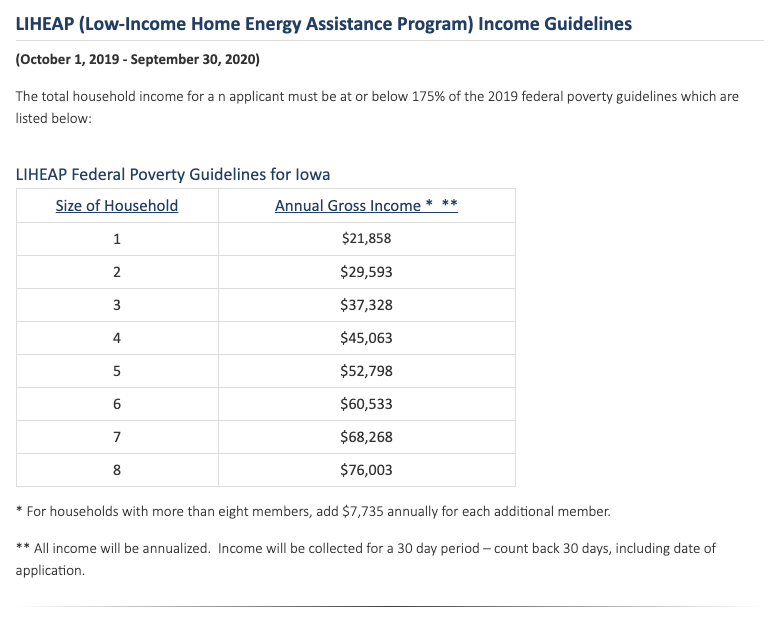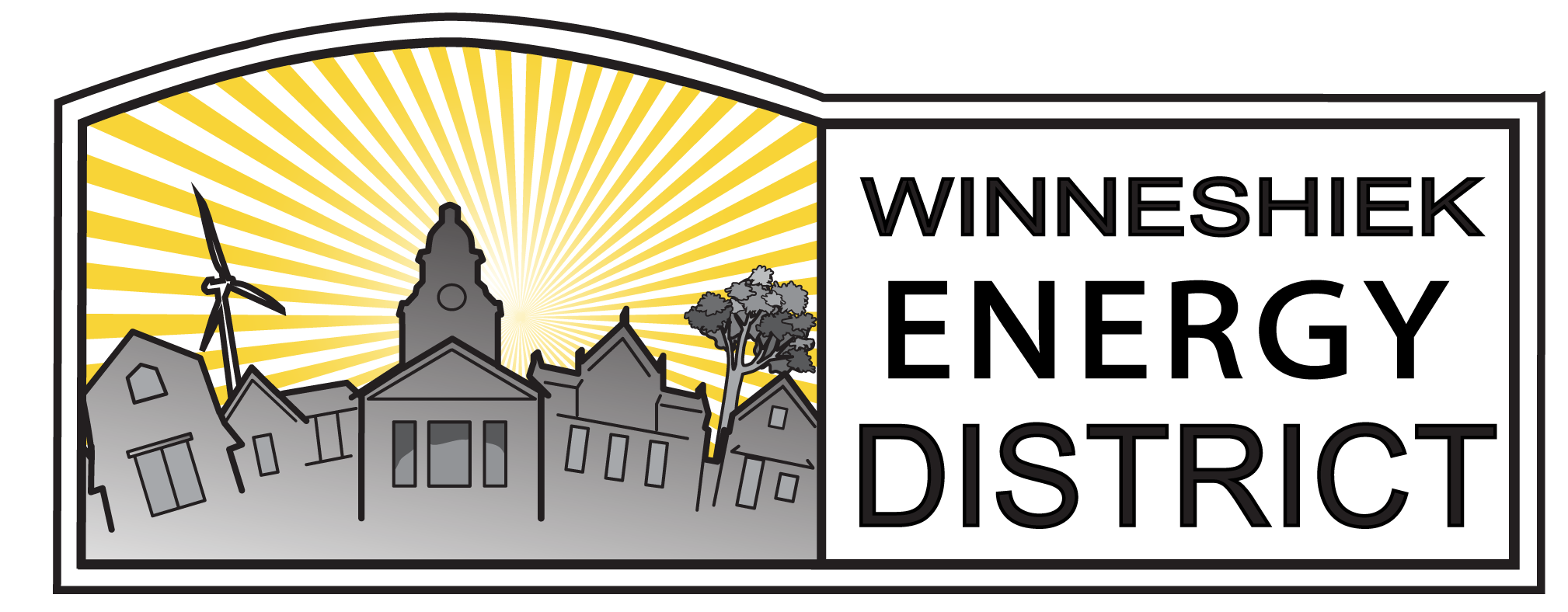Utility Shutoffs, Public Health, and Energy Burden
Andy Johnson, Executive Director
Your Energy District has been among many Iowa voices urging a ban on all utility disconnections during the current public health crisis. On March 27th, the Iowa Utilities Board ordered:
All electric and natural gas utilities, including municipal, cooperative, and investor-owned, and all investor-owned water utilities are restricted from disconnecting any customers until the public health emergency is lifted by written statement of Governor Kim Reynolds. All water utilities, including rural, municipal, and cooperative, are strongly encouraged and requested to suspend disconnecting any customers.
We applaud and thank the Board for its leadership. In this article we also 1) call on the Governor to issue a comprehensive ban on utility shutoffs, including water and telecommunications, 2) encourage customers to sign up for LIHEAP, and 3) encourage policymakers to reform Iowa’s disconnection policies for the 21st century.
The Governor Should Issue A Comprehensive Ban On All Utility Shutoffs
First, we encourage the Governor to issue a full ban that extends the Utility Board’s action to all utilities, for the duration of the Public Health Emergency. The order should include reconnection of currently disconnected residential accounts, and the suspension of late fees and collection activities.
On March 9th, Governor Reynolds issued a Disaster Proclamation related to COVID-19, and on March 17th, a State of Public Health Disaster Emergency. Both proclamations order all state agencies “to assist the Iowa Department of Public Health and the Iowa Department of Homeland Security and Emergency Management in performing any and all activities necessary to prevent, contain, and mitigate the effects of the COVID-19 virus.”
Surely every Iowa households is facing the same public health emergency, both from COVID-19 directly, and from the economic conditions and isolation that households face for the indefinite future. Surely all utilities – gas, electric, water, and telecommunications (including internet) – are equally critical to public health in the current situation.
We also believe the Governor, Legislature, Utilities Board, and others should be actively pursuing funds and mechanisms (state and federal) to mitigate the utility debt burden many households may soon face. Temporary protection from disconnection does not mean that bills don’t continue to add up, and many households may face disconnection and related credit troubles when the protection is lifted.
Customers Should Consider Signing Up For LIHEAP Now
Iowa code already includes a winter moratorium on gas and electric utility shutoffs for qualifying customers during the heating season, November 1 to April 1, and for all customers anytime the temperature is below 20 degrees. The Utilities Board recently extended the winter moratorium for qualifying customers one month, to May 1.
Low-income households qualify for the moratorium by signing up for the Low-Income Home Energy Assistance Program (LIHEAP), which provides a one-time payment (each winter) to assist with household heating costs. We encourage all households that struggle with utility bills to apply for LIHEAP now.
LIHEAP is administered by Iowa’s Community Action Agencies. The deadline to apply was extended to May 31st this year due to the Public Health Emergency. NEIA households should call Northeast Iowa Community Action at 563-387-4924. Elsewhere in the state, find your contact information here.
Due to the extended moratorium, and extended deadline to apply, low-income households still have time to receive assistance, as well as additional protection from disconnection. The income guidelines are shown below – if you think you may qualify, please apply now.
NOTE: eligibility is based on recent 30-day income, so divide the “gross income” figure in the chart below by 12 to see if you may qualify based on recent monthly income.

Iowa’s Disconnect Policies Need Reform
According to the Iowa Utilities Board reports, in 2019 Iowa’s investor-owned utilities (Alliant, MidAmerican, and Black Hills) issued over 727,000 disconnection notices to natural gas and electric customers, and involuntarily disconnected over 61,000. Roughly 195,000 customers had past due accounts in any given month.
The figures for all of Iowa are higher, as the IUB numbers do not cover customers of consumer-owned utilities such as municipal utilities or rural electric cooperatives, and they include no water or telecommunications utilities at all.
Part of the problem is that the LIHEAP program discussed in the previous section does not reach, assist, or protect from disconnection the vast majority of income-eligible Iowa households. According to the US Department of Health and Human Services’ (HHS) LIHEAP data warehouse, only about 83,000 Iowa households are served by LIHEAP, out of an income-eligible population of 294,000 households.
If just 28% of eligible households are receiving LIHEAP home heating assistance – and therefore protection from winter utility shutoff – clearly the shutoff moratorium is failing to cover the vast majority of income-eligible households.
Linking a disconnect policy to income, and utilizing an existing program like LIHEAP for certification, makes sense. In practice, as the numbers show, it isn’t enough. Many customers may be unaware of LIHEAP, and others may have reasons not to apply. All Iowans should still receive the benefit of shutoff protection, and related disconnect policies.
According to the HHS compilation of state disconnections policies, most states do not link their disconnect protection policies to LIHEAP. The majority don’t utilize income qualifications at all, but rely on a combination of seasonal dates and temperature. Most include a summer heat-related ban as well, which is of growing importance for public health in our warming climate.
Iowa could easily reform its weather-related utility disconnect prohibitions, increase their administrative efficiency, and provide protection for all Iowa households. Expand shutoff protections beyond LIHEAP. Keep a seasonal ban on all shutoff from November to April. Add a summer heat-related ban at temps above 90 degrees.
While some may worry about the moral hazard of “non-needy” customers abusing shutoff protection policies, the aforementioned data should allay such worries.
If 294,000 Iowa households meet low-income criteria for LIHEAP, and Iowa’s investor-owned utilities report 195,000 past due accounts, clearly the overwhelming majority of those struggling to pay are low-income households. It is difficult to even imagine well-off households risking the negative credit and related impacts of not paying utility bills.
Beyond Utility Shutoffs in 21st Century Iowa
Reform of Iowa’s weather-related utility shutoff policies should not be difficult. Policymakers should seriously consider going much further.
We recognize that calls to permanently move away from all utility shutoffs may be met with immediate skepticism by some. We suggest the 21st century energy world – and economy – offer sufficient evidence to all of the need for new policy options.
One critical example of this 21st century energy world is the trend towards economy-wide electrification. As large-scale renewable electricity becomes cost-effective and the grid greens, the trends are clear towards widespread adoption of electric vehicles and heat pumps. What happens when a struggling parent who relies on an electric vehicle to go to work has their electricity turned off?
Combine this single example with alarming data on the growing “energy burden” facing Iowa households. According to a 2018 report The High Cost Of Energy In Rural America, rural low-income households have an “energy burden” (the percentage of household income spent on energy bills) three times greater (9%) than their non low income counterparts (3%). Elderly, non-white, and renters also face very high burdens.
More specifically, the Home Energy Affordability Gap project’s 2019 Iowa data show the energy burden for over 66,000 lowest-income households was 31%, for another 80,000 households the burden was 17%, and another 50,000 households was 11%. These energy burden figures do not include water and internet utilities, but what family can thrive without water, and what child can succeed in school today without internet?
These are challenging issues that go well beyond discussions of energy and utility shutoff policy. But it is increasingly clear that utility shutoffs are an ineffective, unjust, and counterproductive bludgeon that only reduces the economic opportunity and productivity of already-struggling households. Children, communities, and the economy at large are all unacceptable “collateral damage”.
Alternatives exist, from proactive utilities utilizing early intervention and referral, to more effective and better funded energy efficiency programs (including Weatherization, for which Iowa utilities have recently slashed funding), alternate rates and rate assistance programs, and smart grid and meter technologies (that can also make it easier for utilities to disconnect customers).
We encourage Iowa regulators, lawmakers, and stakeholders across the political spectrum to rethink the concept of utility shutoffs altogether. Whether through the lens of justice and human rights, or the lens of economic opportunity and productivity, the era of utility shutoffs should come to a close.
